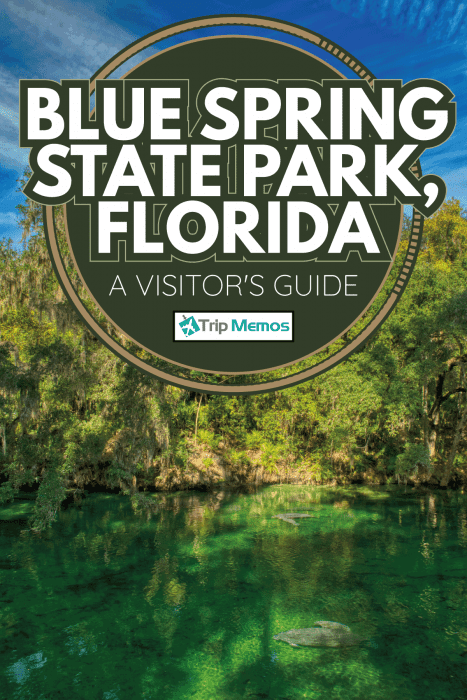Imagine standing on the shoreline, witnessing a group of majestic manatees gliding gracefully through the crystal-clear waters of a Florida spring.
Now, picture yourself floating in that same water, with the gentle giants swimming around you.
Sounds like a dream, doesn't it?
But it's not a dream. It's Blue Spring State Park in Florida, and I'm here to share my personal experience of this enchanting place.
Including close encounters with manatees and alligators.
In this article, I'll guide you through everything you need to know about this hidden gem, from its location and how to get there to its rich history and the amazing wildlife that calls it home.
I'll also cover the range of exciting activities available within the park and when is the best time to visit.
So, if you're ready for a captivating adventure full of unforgettable memories, keep reading to find out all you need to know about the wonder that is Blue Spring State Park.
Where is Blue Spring State Park?
Blue Springs State Park is located north of Orlando and inland from New Smyrna Beach, just West of Orange City, Florida.
The park sits next to two other parks along the Saint Johns River.
How to get to Blue Spring SP from Orlando
From Orlando, you'll want to head Northbound on I-4. Take this interstate and follow I-4 E to US-17 N/US-92 E in Seminole County. Take exit 104 from I-4 E, where you'll continue to Blue Springs State Park.
In Orange City, you turn left onto French Avenue, left onto Becker Boulevard, and then turn right into the park. The trip is about 33.5 miles and takes a little over forty minutes.
How to get to Blue Spring SP from Tampa
The trip from Tampa, Florida, takes you right to Orlando and then follows the same route to the park.
You'll want to take I-275 N to get to I-4 E. You stay on I-4 E through Orlando, get off at exit 104, and continue with US-17 N/US-92 E to the park. In Orange City, you turn left onto French Avenue, left onto Becker Boulevard, and then turn right into the park. The trip is about 117 miles and takes just under two hours.
About the park
The history of the park
Blue Springs used to be privately owned and a bustling fish camp. The park was founded in 1972 to protect the manatees living in the Saint John's River.
Before being designated a park, the area was so busy the manatees rarely visited and had essentially lost their winter home. Now, around 500 manatees make the park and river their home.
Logging became big business in the area, with steamboats taking the cypress and pine logs up the river to Jacksonville.
A large plantation house built in 1872 by the Thursby family still stands on the property and has been restored as a historical landmark. The area was a busy riverboat landing, like the Wild West if it was a Florida swamp.
Indigenous people history
Blue Springs was originally a Timucuan Indian village, and this tribe lived in the area for over 3,000 years.
Huge piles of snail shells were found on the east end of the spring. They were a staple food for the tribe, and the piles of shells were believed to be used to protect their homes from seasonal flooding and acted as a barrier.
Wildlife in Blue Spring State Park
Are the manatees at Blue Springs?
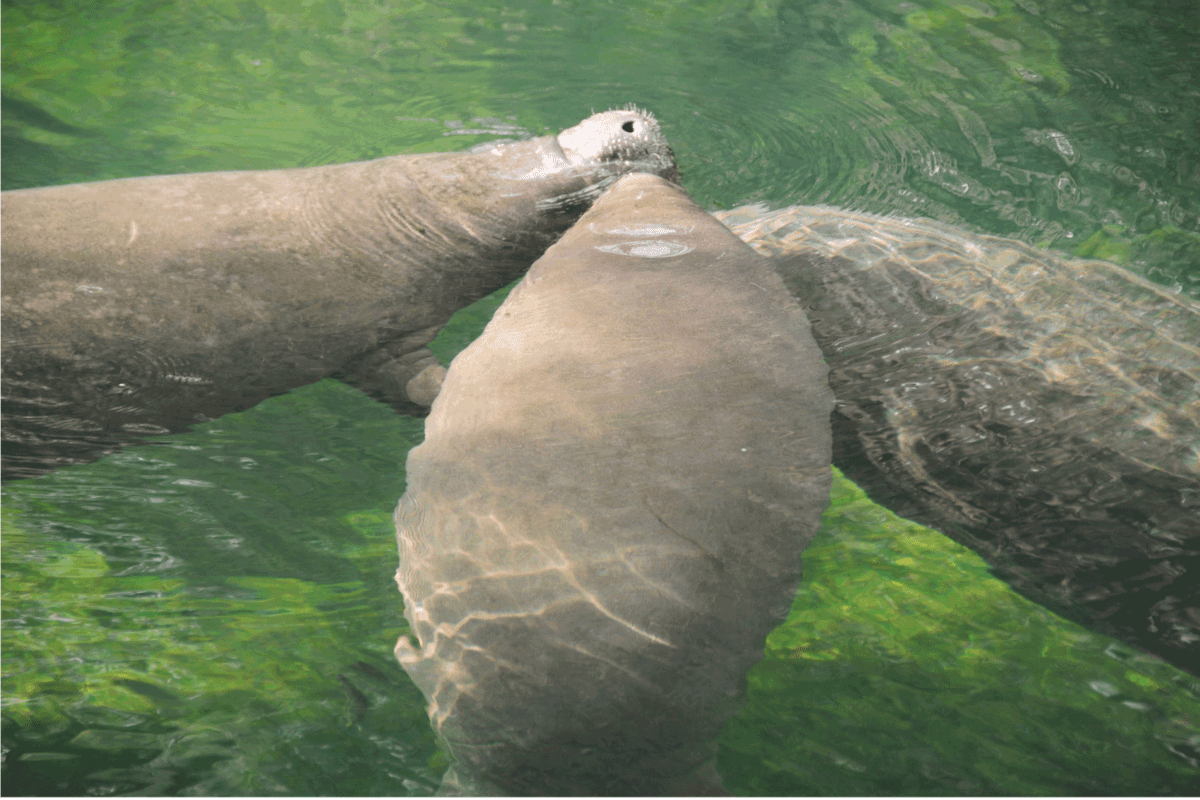
Manatees frequent Blue Springs, and though they show up in larger numbers in the winter, are always around.
Blue Springs is one of the only places in the world where you can dependably stand on the shore and watch manatees.
You are not allowed to approach the manatees and should only swim in designated areas. That being said, if manatees decide to approach you in those areas, you can swim with them.
In fact, that has happened to us! My husband and son went in the water while multiple huge manatees were swimming nearby. The manatees approached and swam right next to the people.
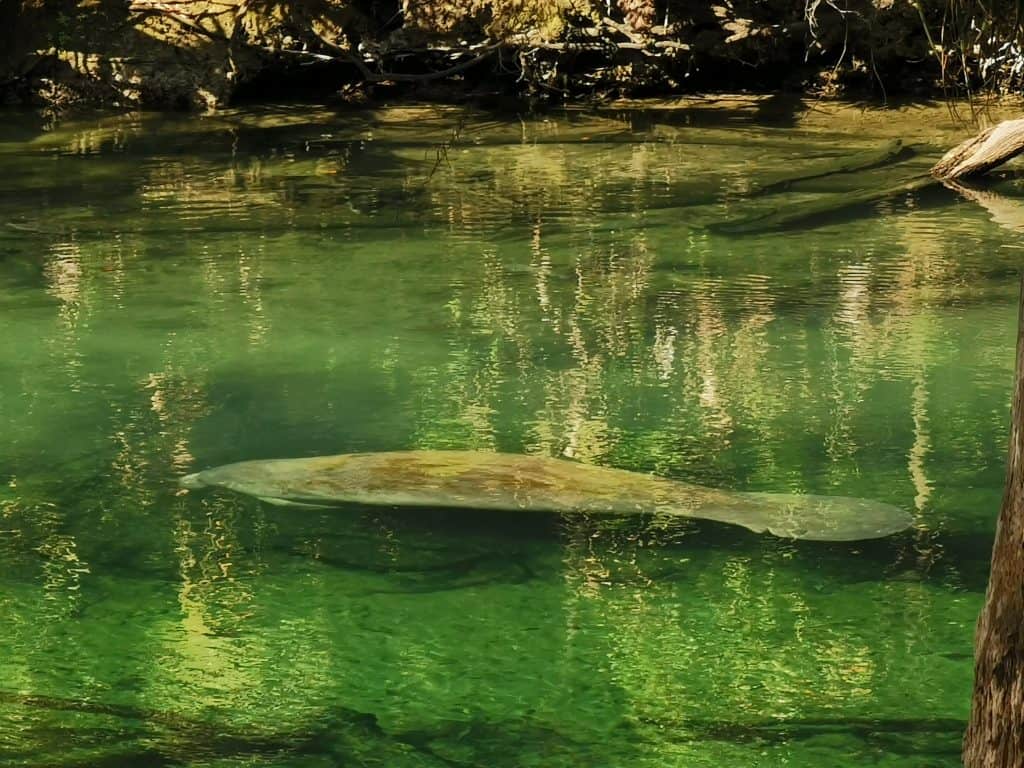
Park docents kept a watchful eye on the people and animals and kept telling bathers to avoid reaching out to the manatees. If a manatee comes to you, that's ok, but you are not allowed to reach your hand out to a manatee to try and touch it.
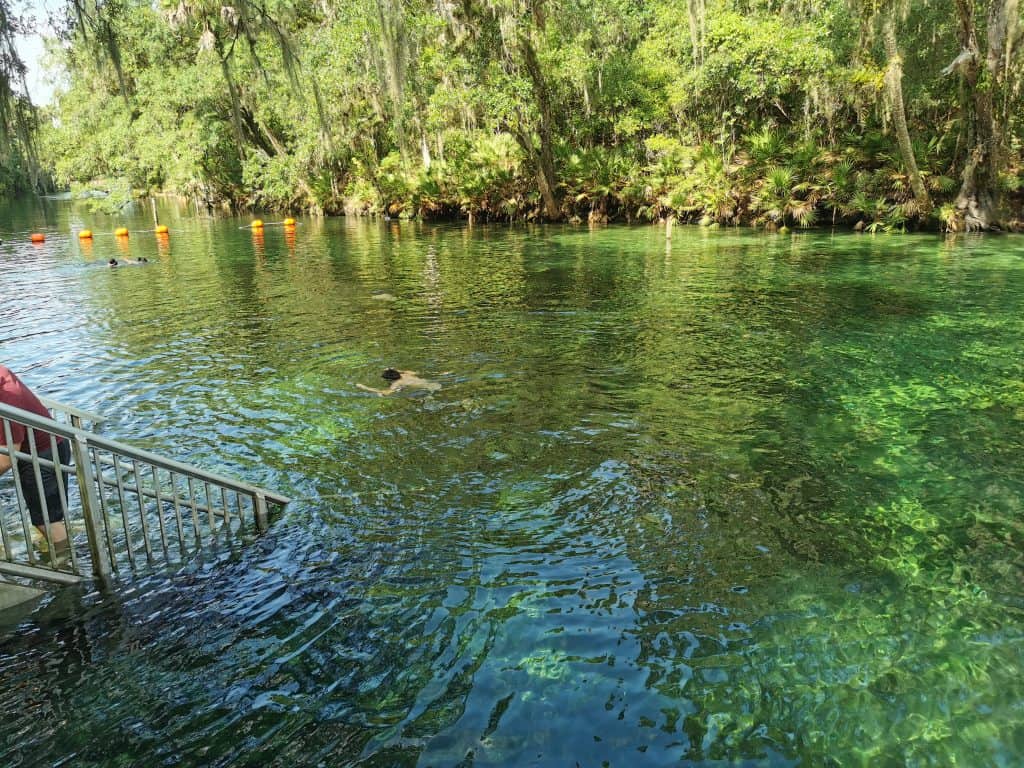
At some point, a baby manatee approached my husband. An amazing Florida moment, which I captured on video. I don't have good still images, but it was a bucket list moment for him.
Are there alligators at Blue Spring State Park?
Like most freshwater areas in central Florida, there are alligators in the water.
The park provides them with a safe home alongside the manatees with plenty of fish and birds to feed on.
They prefer quieter areas away from people most of the time, but you should always be aware that they make their home there, and you should only swim in designated areas.
And in case you're wondering, no, the swimming areas are not netted. Alligators could swim right up to the people, but they choose not to.
In fact, I took the picture of this big boy lounging just 200 yards away from where my husband and son were swimming.
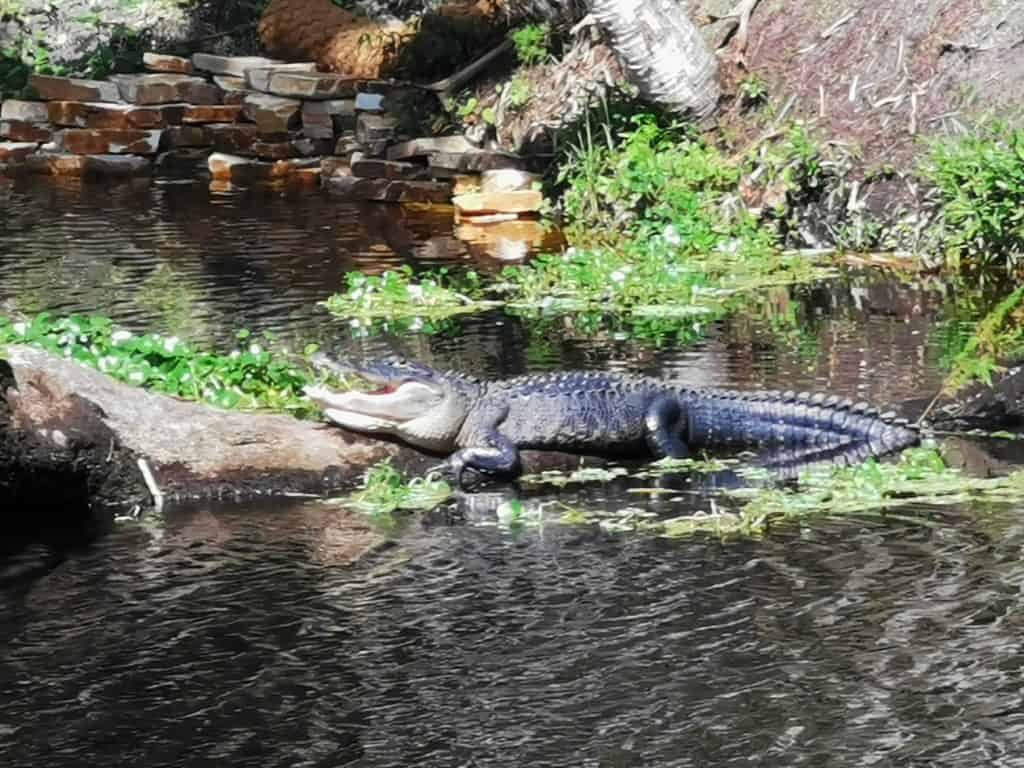
It's fine, I promise. with water this clear, the risk of a surprise attack is extremely low. And if you're still worried, read my post about how to safely watch Florida alligators in the wild.
Other animals you can see in Blue Spring State Park
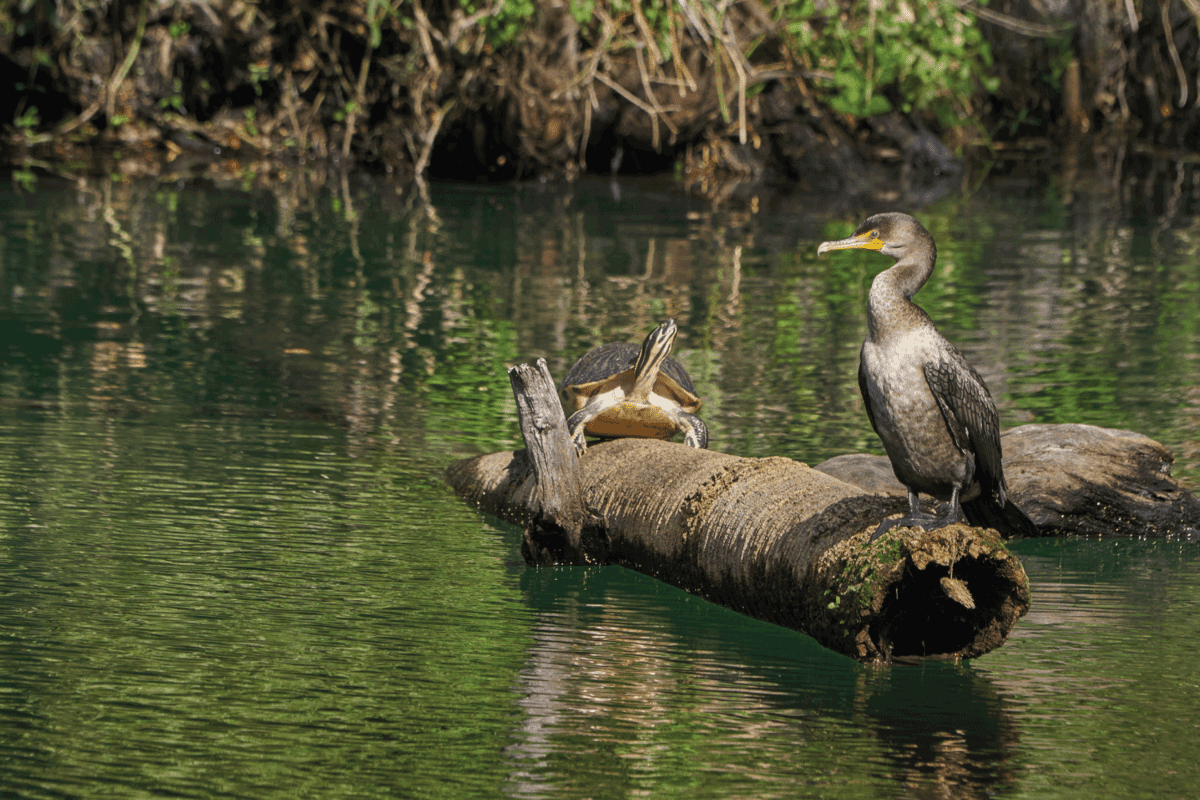
Plenty of other animals make the park their home as well. You can see plenty of birds, including kingfishers, wading birds, ospreys, and eagles. A few black bears can be found in the wooded areas around the springs and gopher tortoises.
In the water, gar, sunfish, and turtles can be seen swimming through the crystal clear waters.
Things to do in Blue Spring State Park
Can you swim in the park?
You can swim in the park, but only in designated areas.
The water temperature is a constant 72 degrees Fahrenheit thanks to being spring-fed, and this stays constant year-round.
The swimming areas are typically closed during winter to allow the manatees to congregate there undisturbed.
Tubing
Tubing is available through Blue Spring Adventures. You enter the water and float back to the main boat dock.
The total trip runs for about an eighth of a mile. We didn't do that, but it does look like a lot of fun.
The tubing run is also closed to humans during winter so as not to disturb the manatees.
Kayaking
Kayaking is also available through Blue Spring Adventures. You can't kayak in the shallow areas where people swim, and manatees congregate during winter to stay warm.
We rented kayaks during winter, and it gave us the opportunity to get close to the manatees. While we couldn't venture into the closed area, the manatees came out occasionally.
Of course, you're not allowed to touch or actively interact with the manatees when kayaking. In fact, if a manatee approaches you, you have to keep your paddle in the kayak. You can't put it in the water (they have heavy fines for that if you do).
I got to see a huge manatee come up for air right next to my kayak. It popped its head out, took a look at me, and went under again.
Hiking
There are a couple of self-guided nature walks available in the park. A boardwalk trail is a short walk, allowing visitors to enjoy the spring's pristine beauty on their way to the spring.
There are platforms along that trail from which you can watch the manatees in the water, especially on cold winter days.
Pine Island trail is a more challenging, 3.6 miles (one way) trail that goes through the scrub brush first and along St. John's blackwater river. Trail condition updates are posted at the trailhead.
What facilities are there in the park?
The park provides quite a few camping options as well as plenty of amenities for guests. They do offer accessibility options to help those with disabilities enjoy the park as well.
The park has both cabins, a campground, and an RV park for camping options.
For day use, showers, bathrooms, and concession facilities are available. There are also educational events and a playground for the kids.
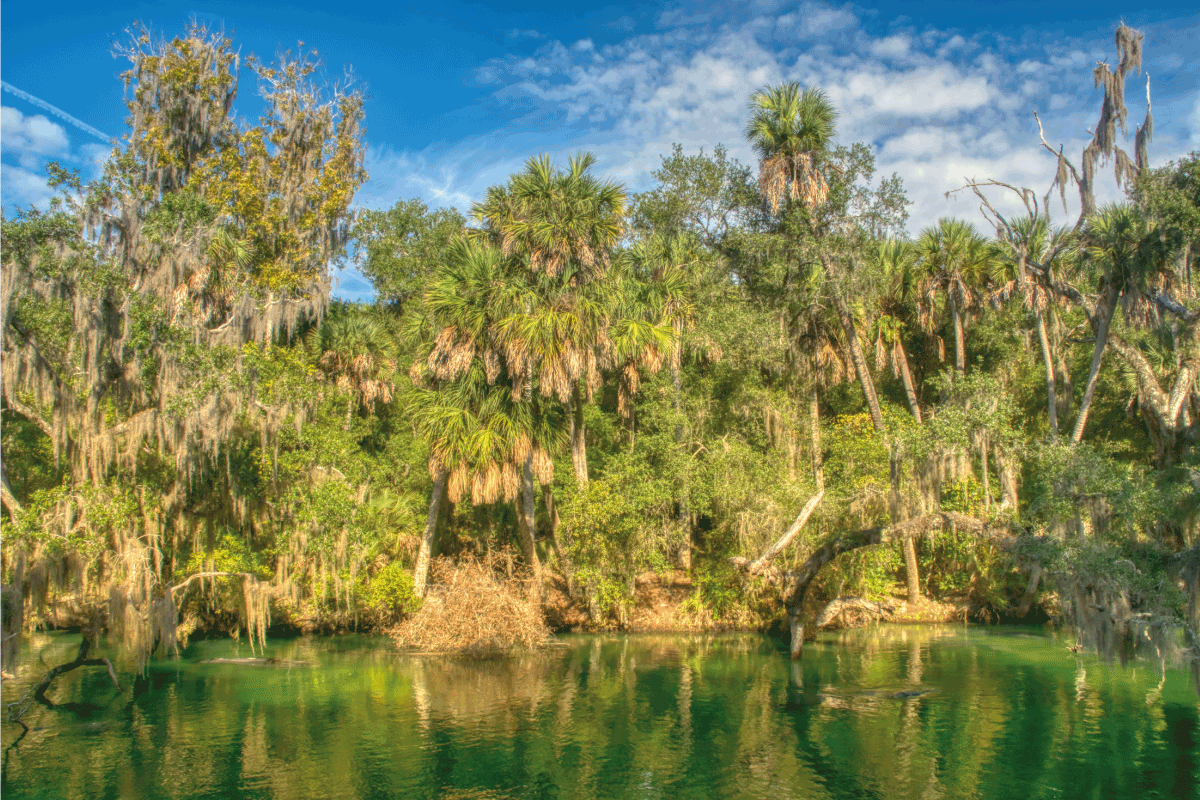
When's the best time to visit Blue Spring State Park, FL?
The park's peak seasons are in the summer and winter, with summer having the best weather and winter having the largest number of manatees in the park.
Fall and spring are offseasons with fewer people, but these are the times the park does maintenance and construction projects, so fewer amenities are available.
If you want to see the most manatees, you'll want to visit the park during the winter months.
Tip: You won't be the only one coming to view the manatees. On colder days, manatees draw visitors from all over.
We had to wait in a long line of cars when we came, and it took us over an hour to finally gain entry. It was worth it, though.
That's it! I've shared everything I know about visiting Blue Spring State Park. I hope you found this helpful! If you have any questions or comments, please use the form below!
Need to save to Pinterest? Here's a pin for you -
